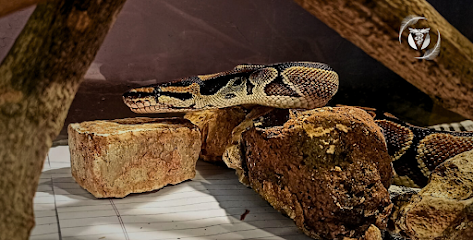How Can I Get My Turtle to Trust Me?
While they might have a grumpy and shy demeanour, turtles make great pets for those willing to accept them in all their amphibian glory. They are intelligent, have vast personalities, and are moderately expensive to maintain with competent care.
It’s no hidden secret that a turtle will naturally shy away from any creature other than itself, including those of its own kind.
Which puts many owners in a tight spot and causes them to wonder – How do I get my turtle to trust me? Will it ever trust me?
Yes, turtles can trust humans; you can achieve that too!
I’ve included answers to these questions, ways to gain their
confidence, and more below.
Food is the Way to the Heart
"Giving your pet foods that it prizes as a treat will encourage it to trust you."
It’s common knowledge that every creature on the face of this planet harbors a liking for those it acknowledges as food providers. Turtles are suckers for all kinds of protein: proof that even animals don’t like their veggies. Giving a couple of mealworms, a few pieces of cooked egg/meat, or anything else you see your pet favor will encourage your turtle to trust you further.
If your pet is still wary of you, try dropping the treat in the water and staying close by. Eventually, as your turtle gets accustomed to you, try feeding with forceps or by hand.
Try to maintain the same timing for feeding your pet. This will help create a routine, after which it'll remind you without delay about feeding time and look forward to your arrival.
Note:
I have often noticed people giving their turtles dairy products.
While doing so occasionally in small amounts as a treat is fine, please do not feed your turtle dairy daily. Like every other animal (except cows, of course), turtles cannot digest dairy and giving them products like paneer (cottage cheese), cheeses, milk, etc. could lead to a spoilt gut and cause severe issues with your pet’s health.
Give Him His Safe Space
"Never enter your turtle's safe space."
With the exception of a
few weird specimens, turtles aren't particularly fond of interaction. Once
drained of their social battery, they will retreat to an area they deem their
'safe space' - a closed spot they feel will protect them if you choose them for
dinner.
Watch your pet closely and try to determine where this spot is. It's an area where they rush to once they've received a treat from you: inside a toy, beneath some decoration or leaves, or (if it's an outdoor enclosure) beneath some shrubbery or a dark corner of its pond.
Make sure that you never enter said safe zone. Doing so ensures your pet that in case things go awry, it has a personal space to take shelter and relax.
You also need to refrain from continually interfering with your pet's schedule. Don't poke around when its sleeping or basking.
 |
| ~ My turtles hate being disturbed during an afternoon bask ~ |
Take it slow
"Let your pet guide you; don't force it into an interaction."
Being timid creatures, turtles will get alarmed by sudden movements and sounds. Thus, you have to sustain slow movements around them, whether it's simply placing food inside the enclosure or feeding by hand.
Touching the turtle before it agrees to eat from your hand won't make things go faster. Once you've achieved the latter, you can gradually try petting the neck or the shell - just for a few seconds. You need to let your pet guide and show you what it’s comfortable with.
Another point to note is it will take time for your pet to get accustomed to your presence. How long this takes depends on its background and age; an older turtle bought from a store may take much longer than a rehomed or younger one. Your patience throughout the journey is necessary, don't force the turtle into an interaction.
Don't touch or grab the turtle if it's hissing, refusing to come out of its shell, or snapping. Place it back and re-evaluate your actions to understand what went wrong.
(In the video below, you can see the way I use my turtles' reactions before moving.)
Observe and Repeat
 |
| ~ Turbo snacking on a mealworm ~ |
When you interact with your turtle, you need to observe its reactions to your actions, study its preferences and quirks, and use the same to your advantage. My turtles generally like to be fed by hand by the pool's edge; they'll take the mealworm from my fingers and go into the water to eat.
The same applies for touch. Slowly but steadily, it will grow comfortable with your touch, provided you adhere to its boundaries.
All it needs is time and patience.
That's All, Folks.
Do you think this article was helpful or lacking in any way? Drop in your responses and critiques in the comments; they’ll be most valuable in enabling this blog to grow.
And if you’ve seen an improvement in your turtle using these tips, comment down below and let me celebrate with you as well!
Any ideas for future articles and questions would be most appreciated, too.
I will be putting up more articles on turtle care and more.
If there are any changes you'd like to add or changes you'd like to have made, feel free to contact me at the below-mentioned socials -
- Gmail - namratansahoo@gmail.com
- Instagram - @TheVetDiariesBlog





.jpg)





Fabulous!!! This article will help me take care of my turtle 🐢
ReplyDeleteThank you so much for your feedback <3
Delete